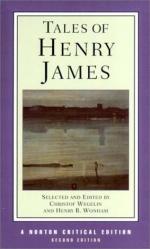
|
| Name: _________________________ | Period: ___________________ |
This test consists of 15 multiple choice questions and 5 short answer questions.
Multiple Choice Questions
1. What does Dr. Hugh bring to Dencombe after Dencombe's collapse?
(a) Jewelry from the Countess.
(b) A copy of his first book for Dencombe to sign.
(c) Medication.
(d) A favorable review in a literary journal.
2. Where does the main character stroll past on her way home?
(a) Mr. Mudge's flat.
(b) Mrs. Jordan's house.
(c) Lady Braden's home.
(d) Captain Everard's apartment.
3. What distracts Dencombe from his meditation on his own future?
(a) Three people walking up the path.
(b) He picks up his book.
(c) He watches people milling about on the lawn below him.
(d) He watches the birds in the trees.
4. How does Dr. Hugh create a reason to meet Dencombe?
(a) He goes out of his way to stop at Dencombe's bench.
(b) He feigns a cramp in his leg.
(c) He feigns shortness of breath.
(d) He leaves his book on Dencombe's bench.
5. Who relies on the main character for support?
(a) Her mother.
(b) Her fiancee.
(c) Her sister.
(d) Her father.
6. What is Miss Staverton's relationship with Spencer Brydon?
(a) Sister-brother.
(b) Old lovers.
(c) Old friends.
(d) Cousins.
7. What does the main character do to help Lady Bradeen?
(a) Saves her money.
(b) Warns her about her husband's visit.
(c) Protects her reputation.
(d) Corrects an error in her telegram.
8. How does James characterize the lifestyle John Marcher leads?
(a) Active.
(b) Social.
(c) Quiet.
(d) Philanthropic.
9. What does Dencombe expect when he opens the package he has received?
(a) To get a dire diagnosis for his health.
(b) To see the flaws in his book.
(c) To find that the check was for less than he expected.
(d) To be proud of his book.
10. How does Spencer Brydon encounter the city he moves to at the beginning of 'Jolly Corner'?
(a) He is fascinated by how it has not changed.
(b) He is appalled by the changes.
(c) He finds it charming.
(d) He is repulsed by it.
11. What did people think fiction should do, according to Henry James?
(a) Raise powerful questions.
(b) Educate or entertain.
(c) Restore the golden age.
(d) Undermine the dominant paradigm.
12. How do the editors characterize James' view on short stories?
(a) A short story could be like a picture.
(b) A short story could be like a force of nature.
(c) A short story could be like a mirror for the reader.
(d) A short story could be a roadmap for the future of society.
13. What does the main character plan to do, when she is disappointed by Captain Everard?
(a) Break off with Mr. Mudge.
(b) Marry Mr. Mudge.
(c) Offer to work for Lady Bradeen.
(d) Expose the affair to Lady Bradeen's husband.
14. Why does Lady Bradeen stop using the main character's telegraph office?
(a) She understands that the main character is watching her.
(b) She suspects the main character of having a crush on Captain Everard.
(c) She is sure the main character has stolen from her.
(d) She moves away.
15. What does art thrive on, according to 'Art of Fiction'?
(a) Real conflicts.
(b) Mysticism.
(c) Vision.
(d) Discussion.
Short Answer Questions
1. How does James describe the Countess?
2. James' critical language come from ___________.
3. How does the main character find out that Lady Bradeen's husband has discovered the affair with Captain Everard?
4. What was the content of the thing John Marcher told May Bartram?
5. How does James describe Miss Vernham?
|
This section contains 572 words (approx. 2 pages at 300 words per page) |

|




